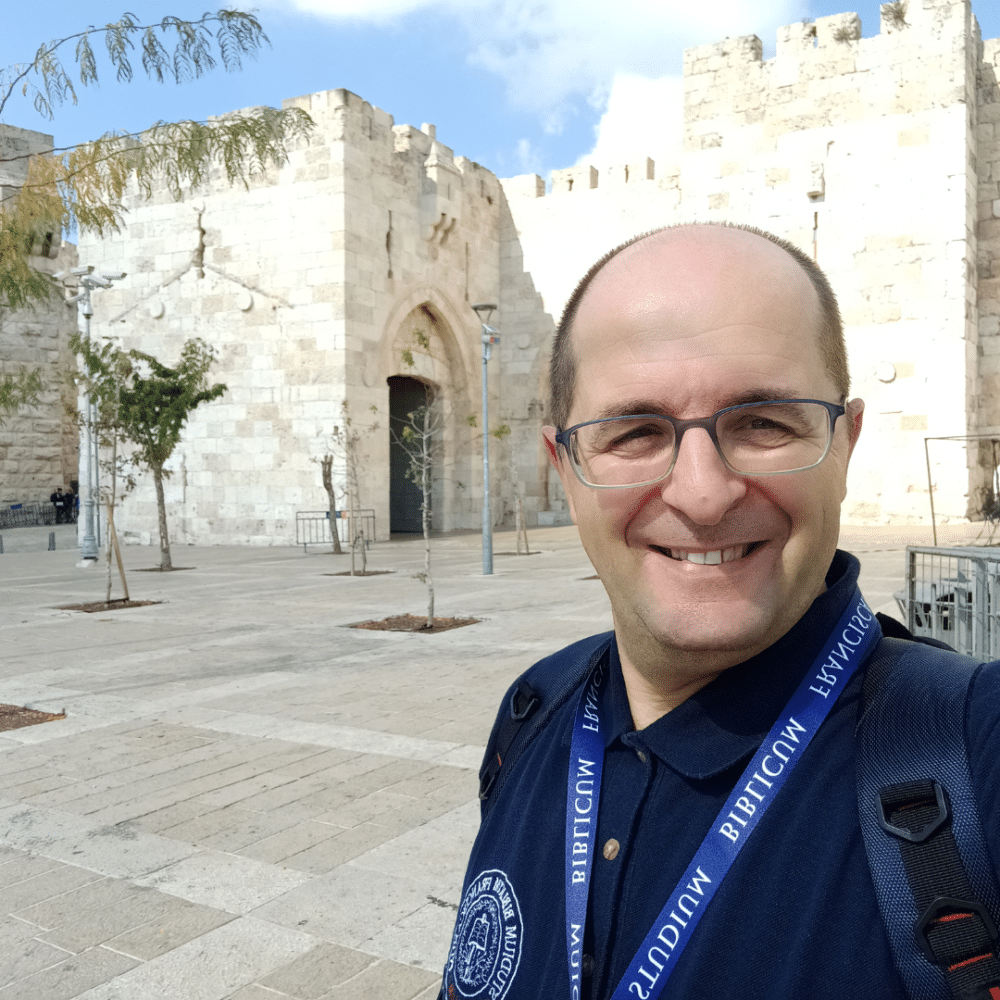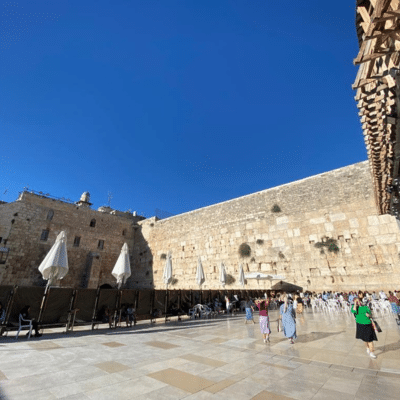“I personally believe that we, as scholars, are called to do well what is the mission for which we have been in the Holy Land for many centuries. Definitely to protect the places but also and above all the hearts."
Fr. Gianaantonio Urbani, a priest of the diocese of Vicenza with a rich curriculum of archaeological studies, has been in the Holy Land since 2010. In Jerusalem he teaches biblical studies at the Studium Biblicum Francescanum.
What does it mean for you to be a professor and archaeologist in the Holy Land?
The archaeological activity is certainly exciting, but it is also very demanding and today with new technologies it is necessary to respect a certain methodology. Then there is the discipline of topographical archaeology, which consists of reading the Holy Places, of the New Testament without forgetting the connections with the Old. For me, as a professor and archaeologist, I see this connection very strongly.
Today the church remembers the presentation of Jesus in the temple, can you give us a general historical picture of this episode of the Gospel of Luke?

The feast of the presentation of Jesus in the temple is a very important feast from the Christian point of view, and it has been and in part still is, in the Jewish tradition. It is the feast of the Light. Today in the celebrations we are going to light a candle, it symbolizes the light of the Christian proclamation. Verses 22-38 of Luke's Gospel emphasize two fundamental aspects. The first aspect is to give the name. The second aspect is to present the firstborn to the temple. These are two prescriptions that come from the Old Testament. Here, then, is the important link between the New reread or read in the light of the Old. Mary and Joseph, a Jewish man and a woman, follow the prescriptions that are given by the Jewish religion and do as all other parents do. Jesus is consecrated to God as the firstborn male. We can look at this episode on the one hand for its historicity and on the other for its meaning, that is, a great proclamation that is born in the Jewish way for a new path that is the Christian one.
To which temple does this Gospel passage refer?
It is the temple that was built after its destruction by Nebuchadnezzar in 586 BC. Decades later, in 515 B.C., what we know today as the "second temple" was rebuilt, in Hebrew Bet HaMikdash. But as we approach the time of this Gospel episode, the temple will undergo great and sumptuous changes by Herod the Great, who in 19 BC will expand the temple area by enlarging what is now the Esplanade of the Mosques. We can therefore say that the temple that Mary and Joseph have with the child was the second temple majestically enlarged.

Do we have archaeological evidence of the custom of presenting the firstborn to the temple?
Yes, something has survived to the present day. Very little evidence comes from the archaeological excavations carried out in the surroundings of the area corresponding to the Esplanade of the Mosques. However, we cannot identify with certainty the exact area where Jesus' presentation took place. The Second Temple was completely destroyed by the Romans in 69-70 AD.
Other clues come from the Herodian road that led to the temple, concrete evidence of the passage of the faithful who went to pray. Other archaeological sources are the remains of the shops where animals were bought to be offered in sacrifice and, even more interestingly, we have the numismatic testimony of the payment of these offerings.
What does this feast mean for us Christians?
For us Christians, this feast is not limited to an offering. However, Jesus remains a Jew and as the firstborn male is consecrated to God according to the law. But in the Christian tradition, particularly in the Byzantine period, this feast will take on a new meaning. It concludes the Christmas season of light, of the birth of the Saviour, and for this reason a candle is lit to remember that Jesus is the light of the nations, the light to enlighten the peoples. The candle we light symbolizes the light we bring every time we witness to the good news of Jesus the Savior. Simeon's words: "My eyes have seen your salvation, prepared by you in the sight of all nations, a light to reveal you to the Gentiles" (Lk 2:22-40) is very strong. The Christ of the Lord is the anointed of God, that is, the Messiah of the Lord, the one whom God has prepared for the salvation of men. That is why I sometimes say that Christianity is not so much a religion, but it is a way that illuminates those we meet and that has enlightened us so that we in turn can bring the light.
In the light of the dramatic events that afflict the Holy Land, do you see a way, a possibility of peace, of mutual knowledge through archaeological studies and culture in general?
I personally believe that we, as scholars, are called to do well what is the mission for which we have been in the Holy Land for many centuries. Certainly to guard the places but also and above all the hearts. This is not a slogan. The moment we go to guard a place, we study it, we give it prestige, we cannot forget the humanity that lives there. It is important to work with the people who live in these places, whether they are Christians, because they are our brothers and sisters, whether they are of other religions. I am thinking of Islam, whose faithful are our neighbours on the Via Dolorosa in Jerusalem, but I am also thinking of Judaism, which nevertheless remains the holy root of our Christian way.
I cultivate the word "hope." It is important that the presence of Christians in the Holy Land is not diminished because I believe that they play a role of peacemaking between the different parties. However, mending relationships requires a leap of courage on the part of those people who are now in positions of responsibility. Until now, violence and weapons have spoken, creating more and more of a stark divide. The Holy Land has always experienced dramatic moments, but this must not make us forget that there is a tomorrow in which we can bring people together, hearts and try as much as possible to make them dialogue. One of these dialogues is also culture. We have already seen too much violence, now we need a time of light, we have this hope.


















